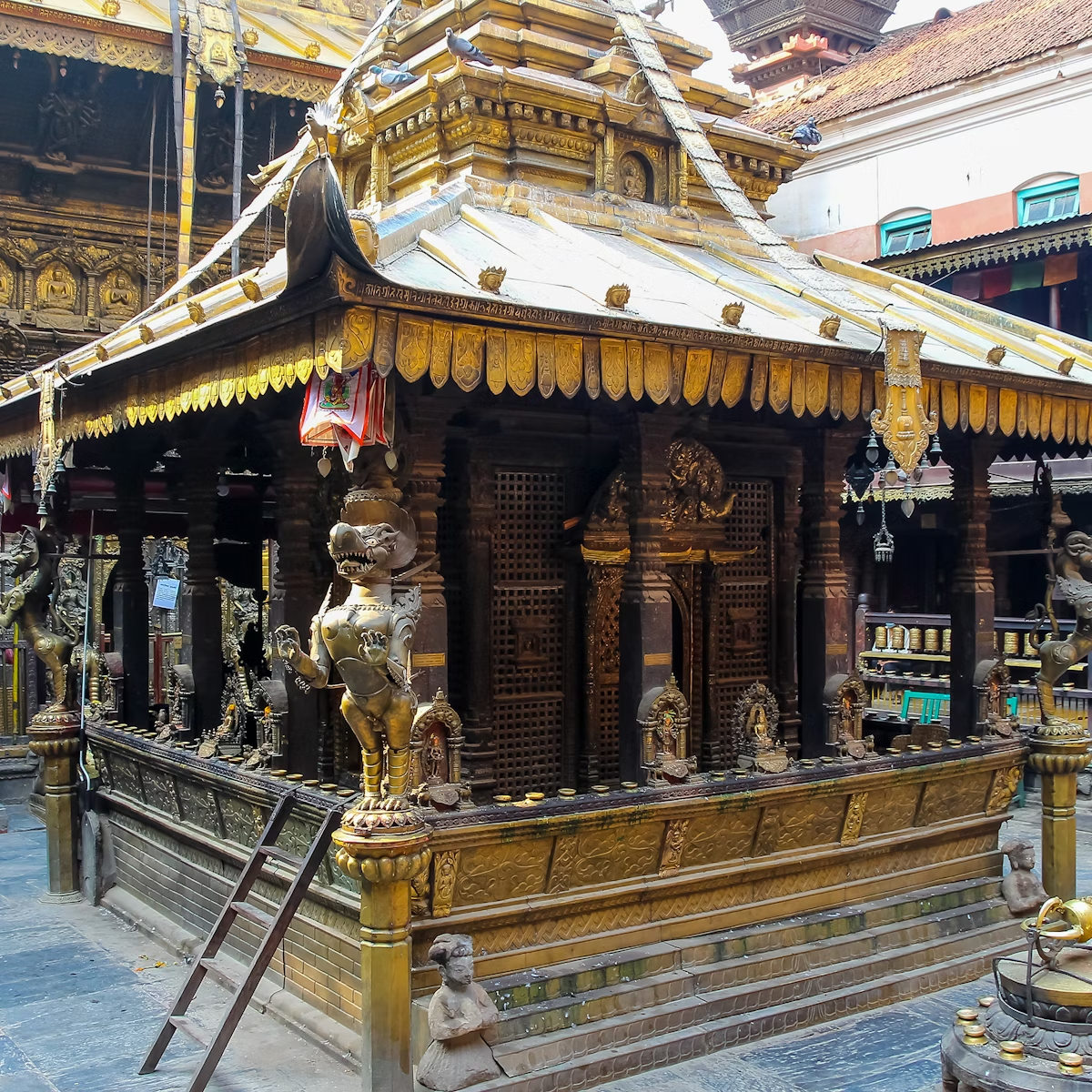Heading into Durbar Sq, you can’t miss the splendid Krishna Mandir built by King Siddhinarsingh Malla in 1637. Constructed from carved stone – in place of the usual brick and timber – this fabulous architectural confection shows the clear influence of Indian temple design and is the earliest stone temple of its type in Nepal. The temple stayed intact through the 2015 earthquake.
The temple consists of three tiers, fronted by columns and supporting a northern Indian–style shikhara spire. The distinctive temple is often depicted on the ornate brass butter lamps hung in Nepali homes. Non-Hindus cannot enter to view the statue of Krishna, the goatherd, but you’ll often hear temple musicians playing upstairs. Vishnu’s mount, the man-bird Garuda, kneels with folded arms on top of a column facing the temple. The delicate stone carvings along the beam on the 1st floor recount events from the Mahabharata, while the hard-to-see beam on the 2nd floor features scenes from the Ramayana.
A major festival, Krishna Jayanta, also known as Krishnasthami, is held here in the Nepali month of Bhadra (August to September) for Krishna’s birthday.








